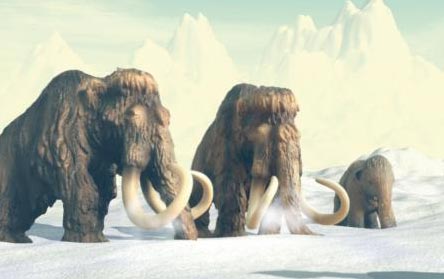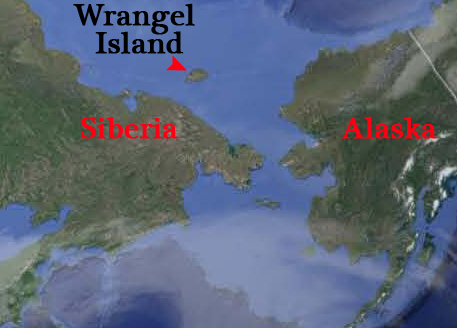Mammoth Mutational Meltdown As Species Headed for Extinction
Woolly Mammoths experienced a mutational meltdown in their genome prior to their extinction according to a study published this week by researchers at the University of California (Berkeley). The Woolly Mammoth genome has been mapped (2015), scientists have been able to make comparisons between the extinct species (Mammuthus primigenius) and its closest living relative, the Indian Elephant (Elephas maximus). A great deal of information has been gained from these genetic studies, but the mystery of why this animal which roamed across Europe, Siberia, North America and the land mass which once joined Asia to the Americas (Beringia), died out remains.
In this new research, scientists from the University of California (Berkeley) compared the genetic makeup of one of the last surviving mammoths, with the genome of a mammoth that had lived when these iconic creatures of the Pleistocene were still thriving.
To view models and replicas of Woolly Mammoths and other prehistoric animals: Papo Prehistoric Animal Models.
Study into Woolly Mammoths
To read an article on the mapping of the Woolly Mammoth genome: Woolly Mammoth Genome is Sequenced.
Comparing the Genome of a Woolly Mammoth from 45,000 Years Ago
The comparison gave researchers the rare opportunity to see what happens to the genome as a population dwindles, the conclusions drawn support existing theories of genome deterioration stemming from small population sizes. The study also provides a stark warning to conservationists and environmentalists. Preserving a small group of isolated animals is not sufficient to stop negative effects of inbreeding and genomic meltdown.
Corresponding author, Rebekah Rogers, who led the work as a postdoctoral scholar at Berkeley and is now an assistant professor at the University of North Carolina stated:
“There is a long history of theoretical work about how genomes might change in small populations. Here we got a rare chance to look at snapshots of genomes “before” and “after” a population decline in a single species. The results we found were consistent with this theory that had been discussed for decades.”
Wrangel Island – The Last Refuge for the Woolly Mammoth
The researchers, which included Professor Monty Slatkin, looked at the genome from a Woolly Mammoth that had lived on Wrangel Island, the last known refuge of the Woolly Mammoth. The DNA was extracted from a specimen that lived some six hundred years before the elephant species finally died out. The genetic material from the 4,300-year-old individual was compared to the DNA from a mammoth that had lived in Siberia some 40,000 years earlier when the Woolly Mammoth population was still large and relatively robust.
Reporting in the journal “PLOS Genetics”, the researchers found a lot of mutations in the Wrangel Island specimen’s genome. The comparative analysis with the mainland mammoth remains showed that the Wrangel Island specimen had accumulated multiple harmful mutations in its genome, which interfered with gene functions. The animals had lost many olfactory receptors, which detect odours, as well as urinary proteins, which can impact upon social status and mate choice. The genome also revealed that the Wrangel Island mammoth had specific mutations that likely created an unusual translucent satin coat.
Rebekah Rogers said mathematical models developed by Slatkin of how genomes change as population conditions change were key to analysing and comparing the two genomes.
She stated:
“With only two specimens to look at, these mathematical models were important to show that the differences between the two mammoths are too extreme to be explained by other factors.”
The Demise of a Population
Rising sea levels cut off the land that is now known as Wrangel Island around 10,000 years ago. A population of Woolly Mammoths were then isolated from the mainland and this population persisted for several thousand years, before the last of the Mammoths became extinct around 2000 B.C.
The Location of Wrangel Island in the Arctic Ocean
Picture credit: Google Maps
The isolated and small population of Wrangel Island mammoths probably exhibited an accumulation of detrimental mutations consistent with genomic meltdown in response to low effective population sizes in the dwindling population. With Mountain Gorilla (Gorilla beringei beringei), Snow Leopard (Panthera uncia) and the Sumatran Rhinoceros (Dicerorhinus sumatrensis) populations at or below the assumed population of Wrangel Island mammoths (around 300 individuals), this research provides conservationists with sobering evidence which suggests attempting to preserve a small group of individuals may not be enough to stop degradation of the genetic material that the viability of the species depends on.
To read an article that suggests dwindling supplies for freshwater speeded up the demise of isolated Woolly Mammoth populations: Last of the Mammoths Died of Thirst.
Visit Everything Dinosaur’s award-winning website: Everything Dinosaur.








Leave A Comment